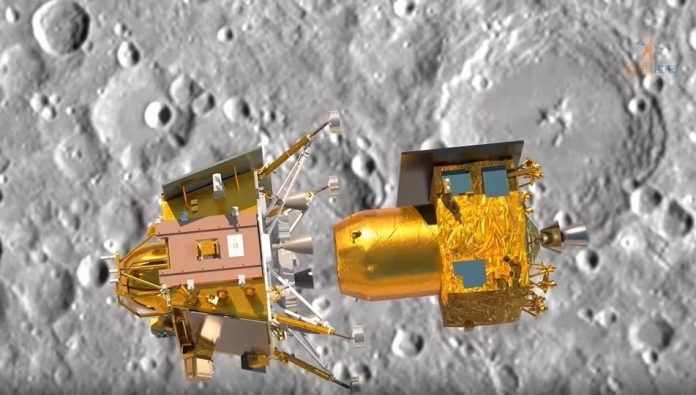India’s Chandrayaan-3 mission is poised to achieve a historic milestone by attempting a soft landing on the Moon’s elusive south pole. This ambitious endeavor, scheduled for approximately 6:04 pm today, marks a crucial moment in India’s space exploration journey. According to ISRO, as of August 22, the mission is on schedule and its live telecast will begin on Wednesday at 5:20 pm Let us explore the significance of a soft landing, the challenges of the south pole, and what lies ahead for this pioneering mission.
The Significance of a Soft Landing
A soft landing, as defined by ISRO (Indian Space Research Organisation), entails safely touching down on the lunar surface at a controlled speed to avoid spacecraft damage. Achieving this delicate maneuver without human intervention is a testament to a spacecraft’s technical prowess. Amitabha Ghosh, a scientist involved in NASA’s Mars Rover mission, likened it to decelerating a spacecraft hurtling through space, traveling at speeds ten times that of an airplane, to a near standstill in mere minutes – all without human guidance.
Chandrayaan-3 aims to demonstrate three key objectives:
Safe and Soft Landing: The primary goal is to prove that a spacecraft can land gently on the lunar surface, showcasing advanced technical capabilities.
Rover Exploration: The mission intends to deploy a rover capable of moving across the Moon’s surface, facilitating scientific experiments.
In-Situ Scientific Experiments: Chandrayaan-3 will conduct experiments on-site, contributing to our understanding of lunar conditions.
Challenges of Landing at the South Pole
Chandrayaan-3’s choice of the south pole as a landing site is a remarkable decision, setting it apart from previous lunar missions. Here’s why landing here is a formidable challenge:
Extreme Conditions: The south pole experiences incredibly cold temperatures, plummeting to below -230 degrees Celsius. This extreme environment poses operational difficulties for instruments.
Limited Sunlight: Much of the polar region is shrouded in perpetual darkness, devoid of sunlight. This absence of solar energy supply makes sustaining instrument operations a complex task.
Treacherous Terrain: The lunar south pole features numerous large craters, further complicating the landing process.
Despite these challenges, the south pole offers unique advantages. It has remained largely unexplored, and its frigid temperatures may preserve lunar materials, providing insights into the early Solar System.
A Glimpse into the Future
Success in this mission holds the promise of expanding our knowledge of the Moon and the Solar System. Chandrayaan-3’s efforts complement earlier lunar missions by showcasing India’s technological prowess and commitment to space exploration.
It’s worth noting that Chandrayaan-2, India’s previous lunar mission, also aimed for the south pole in 2019. Regrettably, it encountered difficulties during its landing attempt and lost communication upon impact.
Chandrayaan-3’s soft landing attempt at the lunar south pole marks a significant milestone in India’s space endeavors. If successful, it will not only further our understanding of the Moon but also serve as a testament to India’s growing capabilities in space exploration. The world awaits with anticipation as this remarkable mission unfolds, potentially rewriting the history of lunar exploration.
India’s space agency, the Indian Space Research Organisation (ISRO), has made remarkable strides in the field of space exploration over the years. One of its most ambitious projects, Chandrayaan-3, has garnered significant attention from both the scientific community and the general public. Building on the success of its predecessors, Chandrayaan-1 and Chandrayaan-2, this third lunar mission is poised to advance our understanding of Earth’s celestial neighbour.
🔥232










